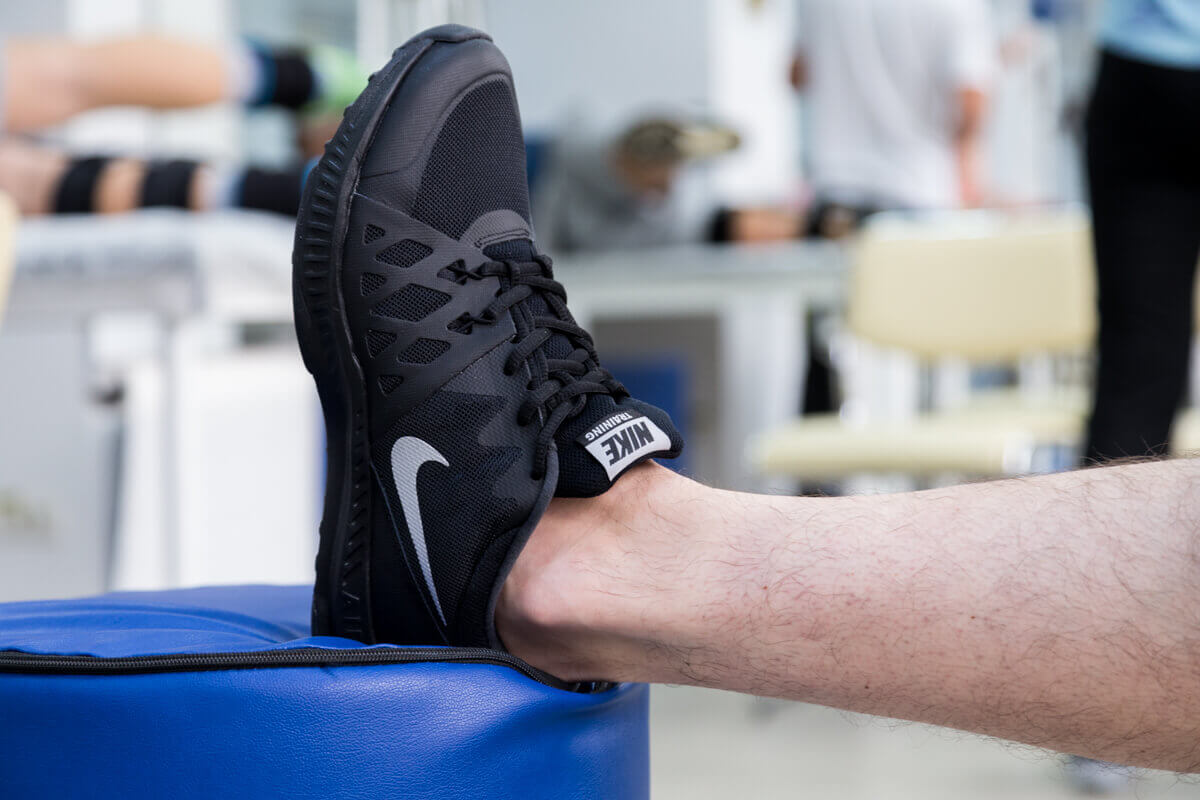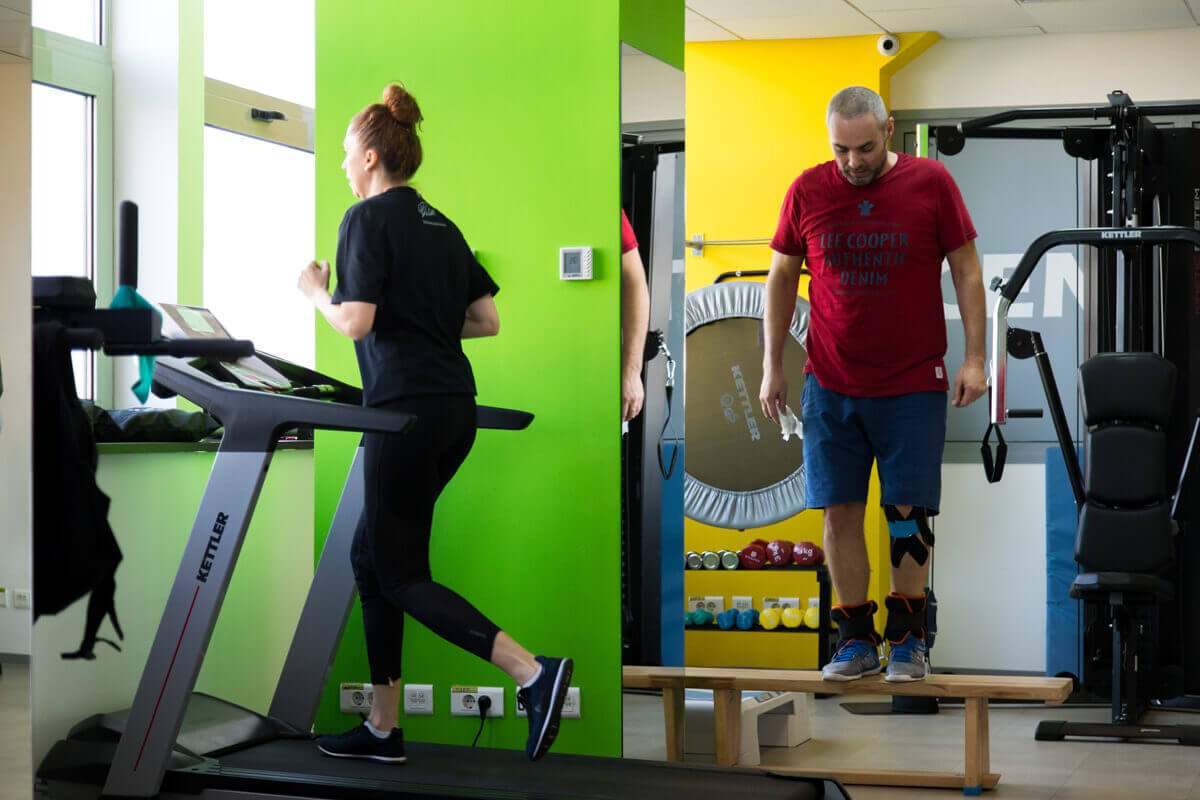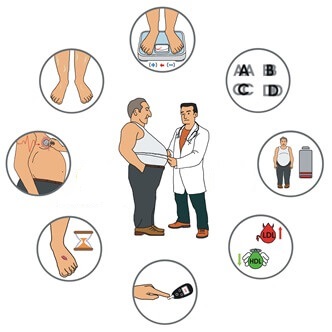See details
READ MORERecovery for iliotibial tract syndrome (runner's knee)
The iliotibial tract friction syndrome is an overload caused by repeated rubbing of the iliotibial tract passing over the lateral femoral epicondyle. It is a well-known cause of pain in runners, which is why it is also called the "runner's knee". It can also occur in other athletes. The average runner steps on the ground about 3000 times every 1.5 km.Thus, we are talking about 60,000 kicks on the ground every 20 km of running. One leg is on the ground during the running movement. Instead, when we walk, 30% of the time, both feet are on the ground. During running, the force of the impact of the foot on the ground was estimated to be about 3 times the weight of the body. We must also talk about the footwear used. After about 750 km, most specialized footwear will retain a shock absorption capacity of only 60% of the initial one.
When we ride a bike, every time we pedal, the iliotibial tract slides over the lateral femoral epicondyle. Knee flexion and extension are repeating approximately 4800 times per hour so that the iliotibial tract will be susceptible to repeated irritations.
Treatment
The pathology is a consequence of overwork during prolonged running. In simple terms, if you stop running, the injury will eventually heal.When the knee is sore and swollen, you need to rest it. Avoid climbing stairs and sports activities that involve jumping. Keep the lower limb stretched when sitting and avoid knee bends. If you continue sports activity in the presence of pain, you will only aggravate the pathology. Minimal discomfort is not a problem, but the pain is a serious cause for concern.
Apply ice for 20 minutes, 2-3 times a day, and at the end of sports activities, thus reducing swelling, inflammation, and pain. An orthopedic doctor or physiotherapist may recommend a series of exercises to strengthen your muscles. In some cases, however, surgery cannot be avoided.

Sports
Use your judgment! When your knees hurt, avoid sports activities because this will only aggravate your problem. Total rest may often be necessary.- Sports that can aggravate patellar tendonitis: volleyball, basketball, football, long-distance running, squash, rugby, and weightlifting.
- Sports that can cause symptoms: cycling (it is best to position your saddle in a position as high as possible and avoid the hills), skiing, tennis.
- Sports that are the easiest for the knees: swimming, walking (also avoid the hills), and cross-country skiing.
Exercise program
The next exercise program should be followed under the close supervision of a physician or physiotherapist. For extended limb lifting exercises or short lifts, you can add ankle weights to increase the endurance of the exercises and increase strength. Start with 500g and gradually increase to 500g per week until you reach 2.5 kg. The exercises should be performed daily until the ankle weights are added. At this time, extensions, short lifts, and sliding on the wall should be performed every 2 days, the stretching exercises still being performed daily. When you can lift your fully extended leg and do short lifts with weights of 2.5 kg, continue them only twice a week, to maintain muscle strength.Leg extensions
Contract the quadriceps muscle so that the knee is flat, straight, and fully extended. Try to lift the entire operated limb off the bed or floor plane. If you can keep your knee straight up to about 45 degrees, pause for a second and then gently lower your foot back on the bed. Relax and repeat. If your knee bends as you try to lift your limb, do not continue with these exercises. Try the quadriceps exercises again until you can lift the limb without bending the knee. Repeat 20 times.

Short lifts
With your knee bent over a rolled towel or blanket, lift your leg so that your knee is fully extended. Keep your knee locked in extension for 5 seconds, then lower gently. Repeat 20 times.

Hip Abduction
Lie on your healthy side. The knees will be in maximum extension. Raise the operated up to 45 degrees, as in the figure below. Hold this position for a second, then return gently. Repeat 20 times.
Slides on the wall
Stand up straight with your back and bottom touching the wall. Place your feet 30 cm away from each other and 6 cm away from the wall. Bend your knee and slide along the wall until your knees are bent at 45 degrees. Hold this position for 5 seconds and then return to the starting position. Perform 3 sets of 10-15 repetitions.
Stretching the quadriceps
This exercise is performed as in the adjacent position. Perform a movement near the heel. When you feel a stretch in the front of the thigh and knee, hold the position for 15-20 seconds for 3-5 repetitions.
Leg stretch
In the position shown, keep the heel straight on the floor, with the knee fully extended. Lean forward to the thighs, your hands supporting your weight. When you feel a slight stretch in the back of the leg and knee, hold this position for 15-20 seconds for 3-5 repetitions.


MAKE AN APPOINTMENT
CONTACT US
SUCCESSFUL RECOVERY STORIES
MAKE AN APPOINTMENT
FOR AN EXAMINATION
See here how you can make an appointment and the location of our clinics.
MAKE AN APPOINTMENT








































































































































